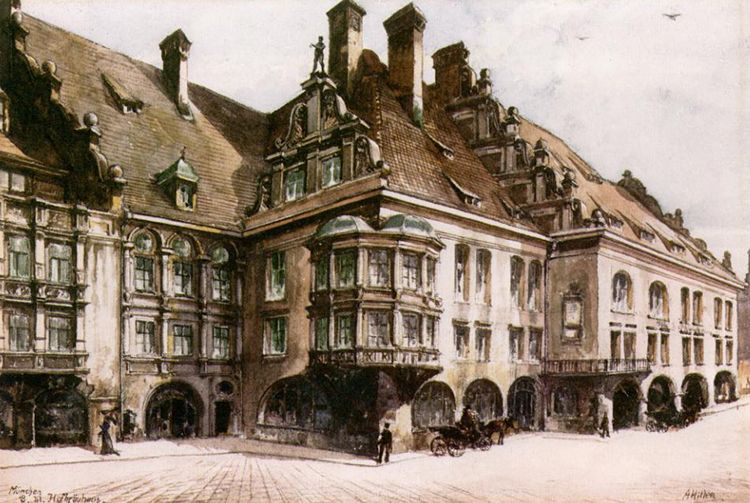10 Facts About Hitler
Jun 07, 2019 • 42 views

Facts
As one of history’s most reviled figures, Adolf Hitler remains the subject of grim fascination, with the details of his life revealing a troubled, complicated figure. Here are 10 facts about him.
1. He was Austrian
The fact that Hitler was Austrian might seem odd given his association with German nationalism, but his affinity for Germany wasn’t all that unusual among Austrians.
Influenced by the tutelage of his high school teacher, Leopold Poetsch, who had strong German nationalist sensibilities (and also taught Aldolf Eichmann), Hitler grew to despise the Austro-Hungarian Empire and began to express loyalty only to Germany.
In 1914, while living in Munich, Hitler managed to enlist in the Bavarian Army before renouncing his Austrian citizenship in 1925 and officially becoming a German citizen in the early 30s.
2. He was a frustrated artist
It’s tempting to wonder how different the 20th century might have been had Hitler’s youthful aspirations to become an artist been realised. He twice failed the entrance exam of the Academy of Fine Arts in Vienna (in 1907 and in 1908) when it was noted that, though he had some talent for architectural draughtsmanship, his human figures lacked detail and character.

One of Hitler’s paintings.
3. He once lived in a homeless shelter
Hitler’s failure to make it as an artist had grave financial consequences. Having had little success selling his paintings, his financial resources were so seriously diminished that he lived in a homeless shelter in Vienna in December 1909. He then lived in a public dormitory for men until 1913, when he received his father’s inheritance and moved to Munich.
4. He wasTime’s “Man of the Year” in 1938

The front cover of theTimeissue that named Hitler ‘Man of the Year’.
A mere year before he led Germany to war,Timemagazine bestowed the title of “Man of the Year” on Hitler. It’s important to note however, that the award isn’t always meant as an endorsement. Indeed,Timeclaims that the title is more a measure of newsworthiness and impact, which explains why fellow recipients of the dubious accolade include Stalin, Khruschchev and Ayatollah Khomeini.
5. He never personally won an election
When Hitler ran for president in April 1932 he lost to Paul von Hindenburg. However, in the federal election of June that year the Nazi Party won 37 of the vote, becoming the largest party in the Reichstag. In the absence of a majority government, Hindenburg appointed Hitler as chancellor in January 1933.
6. He never visited an extermination camp
TheHolocaustof his rule but it is extremely unlikely that Hitler ever actually visited any of his death camps. Although his culpability as the architect of the “Final Solution” is beyond doubt, it seems he was happy to conduct the genocidal project at arm’s length.
7.He championed animal welfare causes
It is perhaps surprising given the horrific cruelty he inflicted on the world that Hitler was a keen advocate of animal welfare. Indeed, it is hard to reconcile his apparent concern for animals – something that found its way into various Nazi party legislation – with the complete lack of compassion and humanity that he showed as a leader.
8. He suffered with a number of health issues
Hitler’s health is the subject of considerable speculation and the list of complaints he’s said to have lived with is extensive. Some historians suggest that he had syphilis (he was diagnosed by his personal physicist Theodor Morell in a 1945 report to Himmler), Parkinson’s disease and Huntington’s disease. It’s also commonly alleged that he had Monorchism – the medical condition of having only one test.
9. He survived numerous assassination attempts
It is not clear how many times an attempt was made on Hitler’s life but it’s safe to say that he survived well over 20 assassination attempts. Even before he became chancellor, Hitler was shot at on several occasions. Later attempts included bomb plots by carpenter Georg Elser in 1939.
10. His nephew, William Patrick Hitler, fought with the US Navy
In 1911, William Patrick Hitler was born to Alois Hitler Jr, Adolf’s brother, and his Irish wife, Bridget Dowling, in Liverpool. Having returned to Germany in 1933 with the hope of benefiting from his uncle’s rise to power, William visited the United States in 1939 at the invitation of William Randolph Hearst, where he remained stranded after the outbreak of the war.
After appealing to President Franklin D. Roosevelt, he was cleared to join the US Navy in 1944 and was awarded the Purple Heart after being injured in action.
